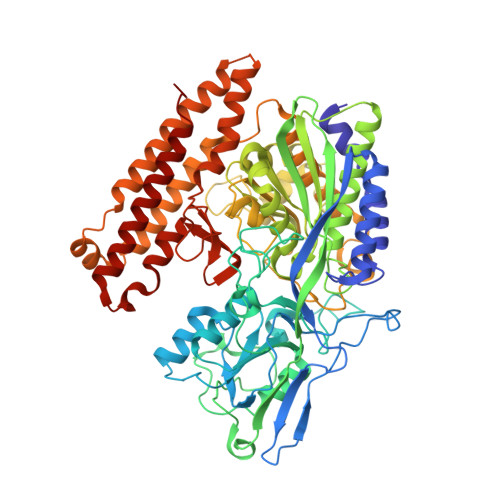Unprecedented Binding Mode of Hydroxamate-Based Inhibitors of Glutamate Carboxypeptidase II: Structural Characterization and Biological Activity.
Novakova, Z., Wozniak, K., Jancarik, A., Rais, R., Wu, Y., Pavlicek, J., Ferraris, D., Havlinova, B., Ptacek, J., Vavra, J., Hin, N., Rojas, C., Majer, P., Slusher, B.S., Tsukamoto, T., Barinka, C.(2016) J Med Chem 59: 4539-4550
- PubMed: 27074627
- DOI: https://doi.org/10.1021/acs.jmedchem.5b01806
- Primary Citation of Related Structures:
5D29, 5ELY - PubMed Abstract:
Inhibition of glutamate carboxypeptidase II (GCPII) is effective in preclinical models of neurological disorders associated with excessive activation of glutamatergic systems. Here we report synthesis, structural characterization, and biological activity of new hydroxamic acid-based inhibitors with nanomolar affinity for human GCPII. Crystal structures of GCPII/hydroxamate complexes revealed an unprecedented binding mode in which the putative P1' glutarate occupies the spacious entrance funnel rather than the conserved glutamate-binding S1' pocket. This unique binding mode provides a mechanistic explanation for the structure-activity relationship data, most notably the lack of enantiospecificity and the tolerance for bulky/hydrophobic functions as substituents of a canonical glutarate moiety. The in vivo pharmacokinetics profile of one of the inhibitors will be presented along with analgesic efficacy data from the rat chronic constrictive injury model of neuropathic pain.
Organizational Affiliation:
Institute of Biotechnology, Academy of Sciences of the Czech Republic, BIOCEV , Prumyslova 595, 252 50 Vestec, Czech Republic.






















